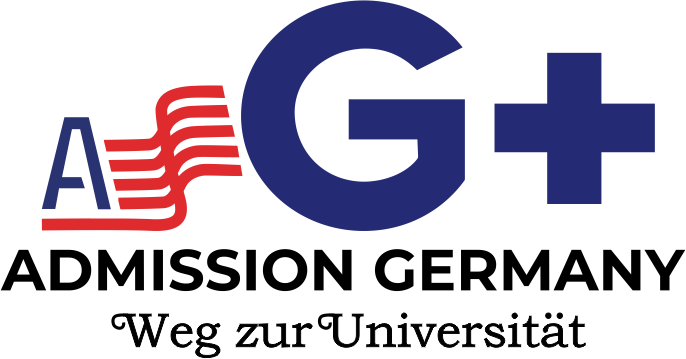Germany has become one of the most sought-after study destinations for international students. Its world-class universities, strong research infrastructure, and tuition-free or low-fee education system make it incredibly appealing.
However, non-EU students (students from outside the European Union) often face one challenge — living and studying expenses. While public universities in Germany usually don’t charge tuition fees, the costs of accommodation, food, health insurance, and daily living can easily reach €800–€1,200 per month.
Thankfully, Germany offers numerous scholarship opportunities that make studying there financially feasible. These scholarships can be broadly categorized into three groups:
- DAAD Scholarships (German Academic Exchange Service) – the most prestigious and comprehensive options
- University-based Scholarships – offered directly by universities
- Regional / Foundation-based Scholarships – funded by states, private organizations, or political foundations
This guide explains how to apply for these scholarships as a non-EU student, including eligibility, required documents, timelines, and practical tips to improve your chances of success.
🎓 1. DAAD Scholarships — The Gold Standard
What Is DAAD?
DAAD (Deutscher Akademischer Austauschdienst) or the German Academic Exchange Service is the largest funding organization in the world supporting international academic exchange. DAAD offers thousands of scholarships every year to foreign students, researchers, and academics.
Most DAAD programs are available for Master’s, PhD, or research projects in Germany. These scholarships often include:
- Full or partial tuition coverage (if applicable)
- Monthly living allowance (€934 for graduates, €1,200 for PhD candidates)
- Travel and health insurance support
- Research and family allowances
DAAD Scholarship Application Process (Step-by-Step)
Step 1: Choose the Right DAAD Program
Visit the and filter by your country, academic field, and study level.
Each program page includes details on eligibility, funding period, required documents, and deadlines.
Examples of popular DAAD programs:
- DAAD EPOS (Development-Related Postgraduate Courses)
- DAAD Research Grants – Doctoral Programs
- DAAD Short-Term Research Grants
- DAAD Helmut-Schmidt-Programme (Public Policy and Good Governance)

Step 2: Register on the DAAD Portal
- Create an account on the
- Verify your email and log in using your new password.
- Go to the Personal Funding → Application section and select your chosen scholarship program.
Step 3: Complete the Online Application Form
Fill out the application carefully. You’ll need to enter:
- Personal information
- Educational history (universities, degrees, grades)
- Proposed study or research program in Germany
- Language proficiency (English or German)
- Motivation statement and study plan
Avoid grammatical errors and ensure your statements are concise yet compelling.
Step 4: Upload Required Documents
Usually, the following are required:
- Certified copies of academic transcripts and certificates
- Proof of English / German proficiency (IELTS, TOEFL, TestDaF, DSH, or Goethe-Zertifikat)
- Passport copy
- Detailed CV (in Europass format preferred)
- Letter(s) of Recommendation (usually 2–3 academic references)
- Letter of Motivation (why Germany, why this program, your career goals)
- Research proposal (for PhD or research applicants)
📝 Tip: Name your files professionally, e.g., Lastname_Firstname_Transcript.pdf and upload them in the correct format (PDF, max 10MB each).
Step 5: Review and Submit
Before submitting, double-check your entries and attachments.
Once you click Submit, you’ll receive an email confirmation from DAAD. Late or incomplete applications are automatically rejected.
Step 6: Selection Process
The selection is based on:
- Academic excellence
- Quality and feasibility of your study/research proposal
- Motivation and leadership potential
- References and social engagement
Shortlisted applicants may be invited to an interview (online or in person).
Successful candidates receive an offer letter, after which they must confirm their university admission and submit final documents (degree certificates, transcripts, etc.).
Step 7: Scholarship Acceptance and Pre-Departure Formalities
Once accepted:
- Confirm both the DAAD scholarship and your university admission.
- Apply for a student visa (if required).
- Arrange health insurance, travel, and accommodation.
- DAAD will transfer your monthly stipend directly to your German bank account after arrival.
✅ Pro Tips for a Successful DAAD Application
- Start Early — Begin preparing at least 9–12 months before deadlines.
- Write a Powerful Motivation Letter — Show clarity, passion, and how your goals align with Germany’s academic strengths.
- Contact Supervisors Early — If applying for a research program, secure a letter of supervision or support from a German professor.
- Strong References Matter — Ask professors who know your academic work well.
- Polish Your Research Proposal — Be specific about methodology, goals, and outcomes.
- Check Deadlines Carefully — DAAD deadlines differ by country and program.
- Proofread Everything — Spelling or formatting mistakes can weaken your profile.
- Learn Basic German — Even for English-taught programs, having A2–B1 German proficiency shows commitment.
🏫 2. University-Based Scholarships
Each German university offers its own scholarships through the International Office or specific departments. These may include:
- Merit-based awards for high achievers
- Need-based grants for students from low-income backgrounds
- Departmental or subject-specific scholarships
- Tuition waivers or assistantships (RA / TA positions)
How to Apply for University Scholarships
Step 1: Research Thoroughly
Visit the International Students / Funding / Scholarships page of your chosen university.
Examples:
- TU Munich (TUM):
- University of Heidelberg:
Each university lists its scholarships, eligibility, and deadlines.
Step 2: Admission + Scholarship Applications
- Some universities automatically consider you for scholarships during admission.
- Others require a separate scholarship application form, often after receiving your admission letter.
Always read the eligibility details carefully — some scholarships are only for specific nationalities or departments.
Step 3: Prepare Your Documents
Common requirements include:
- Transcripts and degree certificates
- Proof of English or German language proficiency
- Motivation letter (tailored to the university’s scholarship)
- Recommendation letters
- Proof of extracurricular or volunteer work
- Admission offer (if required)
Some may request a short essay or project proposal.
Step 4: Apply Online / via Email
Submit your application before the deadline. Many universities accept online applications, but smaller institutions may require sending scanned copies via email or postal mail.
Step 5: Selection and Notification
Selection committees evaluate academic merit, motivation, and fit with the program.
If shortlisted, you might be invited for an interview or presentation.
Results are announced via email or student portals.
University Scholarship Tips
- Apply to Multiple Universities — Increase your chances of success.
- Highlight Academic Excellence — Mention awards, publications, or projects.
- Show Departmental Contribution — Link your goals to the university’s vision.
- Network with Alumni — They often share insider tips about the process.
- Consider Assistantships — Research or teaching assistant positions can fund part of your stay.
- Be Authentic — Don’t exaggerate achievements; focus on your genuine strengths.
🌍 3. Regional & Foundation-Based Scholarships
Germany also has state, political, religious, and non-profit foundations offering scholarships for international students. These programs often target students with strong social engagement, leadership qualities, or research in specific fields.
Top Foundation and Regional Scholarships
- Heinrich Böll Foundation Scholarship
- Focus: Social justice, sustainability, environmental protection
- Eligibility: Excellent academic record, community involvement
- Konrad-Adenauer-Stiftung (KAS)
- Focus: Political engagement, leadership, democracy promotion
- Provides up to €861/month for Master’s and €1,200/month for PhD students
- Friedrich-Ebert-Stiftung (FES)
- Focus: Social and political sciences, equality, labor movements
- Deutschlandstipendium (Germany Scholarship)
- National program supporting talented students (€300/month)
- 50% funded by the government and 50% by private sponsors
- Apply directly through your university
- SBW Berlin Scholarship
- For students with proven social commitment and financial need
- Covers accommodation and a monthly stipend

Application Process for Foundation Scholarships
Step 1: Research Opportunities
Each foundation focuses on certain themes — politics, sustainability, social issues, or science. Choose those aligning with your goals.
Step 2: Check Eligibility and Deadlines
Eligibility may depend on your country, course level, or background (social, academic, etc.). Most open once or twice a year.
Step 3: Prepare Your Documents
Usually required:
- Application form
- Motivation letter (emphasizing social commitment)
- Recommendation letters
- CV and academic transcripts
- Proof of language skills
- Proof of volunteer or leadership experience
Step 4: Submit and Await Interview
Some foundations conduct interviews (in English or German). Be ready to explain your career goals, leadership examples, and connection with the foundation’s mission.
Tips for Regional/Foundation Scholarships
- Align your values with the foundation’s mission (e.g., sustainability, democracy, equality).
- Show community involvement — volunteer experience, NGO work, activism, etc.
- Contact local representatives — many foundations have country offices.
- Keep a calendar — deadlines differ from DAAD and universities.
- Have backup options — apply for at least two to three scholarships simultaneously.
🕓 Timeline and Strategy
| Time Before Intake | Key Actions |
|---|---|
| 12–15 months | Research universities and scholarships; shortlist programs |
| 10–12 months | Contact professors; start preparing documents |
| 8–10 months | Open DAAD / university / foundation applications |
| 6–8 months | Submit applications and request recommendation letters |
| 4–6 months | Prepare for interviews and await results |
| 2–4 months | Accept scholarship, finalize admission, apply for visa |
| 0–2 months | Arrange accommodation, insurance, travel to Germany |
Most German programs begin in October (Winter semester) and April (Summer semester) — always check which one fits your plan.
❓ Frequently Asked Questions (FAQs)
1. Can undergraduate (Bachelor’s) students apply for DAAD?
DAAD primarily funds Master’s and PhD students, but there are a few short-term and summer research programs for undergraduates.
2. Is there an age limit?
There’s no strict age limit, but applicants should have completed their previous degree within the last six years.
3. Can I apply for multiple scholarships?
Yes, you can apply for multiple scholarships (e.g., DAAD + University + Foundation), as long as their terms don’t conflict.
4. Do I need German language skills?
Not always. Many DAAD and university programs are taught in English, but basic German (A2–B1) is highly recommended.
5. What happens if I’m selected for a scholarship but don’t get university admission?
Some DAAD programs give conditional awards. You’ll need to submit your university admission letter later to confirm funding.
6. Are interviews mandatory?
Not always, but top programs like DAAD EPOS or KAS may conduct interviews to assess motivation and academic suitability.
💡 Final Thoughts
Studying in Germany as a non-EU student is a life-changing opportunity — and scholarships can make it entirely affordable.
Here’s a recap of what to remember:
- Begin your research early (at least a year before).
- Apply to multiple scholarships — DAAD, university, and foundation programs.
- Prepare high-quality motivation and recommendation letters.
- Stay organized with deadlines and document management.
- Learn basic German and understand the culture — it improves your experience and chances.
With determination, careful planning, and authentic presentation, you can study in Germany for free or at a very low cost — supported by one of the world’s most respected education systems.



Recent Comments